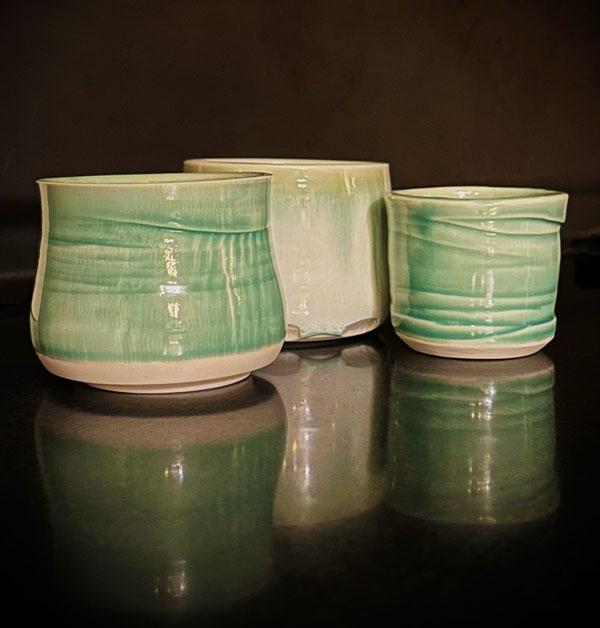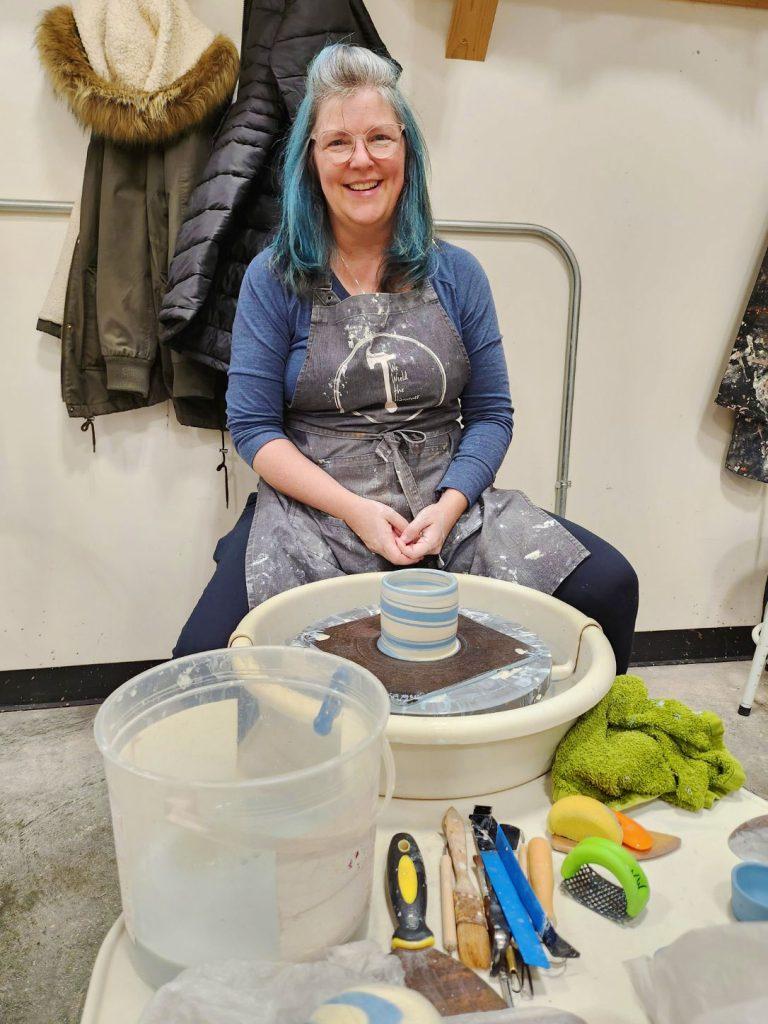From Mud to Art: Rediscovering My Beginner’s Mind
I started pottery after I got home from a temporary move to Portland to support my young adult daughter with eating disorder treatment. It was the first thing I did that was purely creative and solely for myself in a long time, and it was unbelievably nurturing. It is a singular experience loving someone navigating an eating disorder, but that story is for another day. With her recovery well underway, I could breathe again and focus elsewhere, recentering myself. We were back home.
It was at the Northwest Ceramic Studio here in Southern Oregon that I found a beautiful community of creative and lovely humans with whom I get to play. They started their business in 2020 and adjusted to all things COVID, closing for a time, navigating uncertainty, and winding through multiple deep adaptations as we all did. It was a place I could go to find peace and community.
Pottery and ceramics fascinate me. Messy, hands-on learning, it is a transformative medium from mud to art. Well, some days it’s art. 😊 Other days, it’s back to mud. None of the days in the studio are bad because, as Jeff the owner says, “It’s just clay.” You let it go and start again.
It’s not often as an adult you get to experience learning something from the start. A chance to practice beginner’s mind they say—although I’m not sure that’s where my mind is. I’ve had too many years of school to feel completely free of comparison and ranking myself when I try something new. My mind sounds more like a mixture of enthusiastic parts (Let’s jump into the deep end! Let’s get messy! What fun!) surrounded by the careful one (You don’t want to look like a fool), and the comparing super-precise judgmental part (Well, that’s not good enough). Sometimes I have a part that tells me not just “It’s no good” but also “I’m no good.” That one is not as much fun, and we all work to keep it under wraps. This is my beginner’s mind.
While it has been three years and I don’t feel like a beginner in the studio any longer, I moved into a new clay type with porcelain last year, and my beginner learning parts (the Enthusiast, Cautious one, and the Precise judge) all wanted to let me know they were still available for my support: “Ooooh, this is slippery and so cool!”; “Don’t do anything too big, go slowly, start small, and don’t push it”; and “If you don’t pay attention and plan, you’re not going to do it well. We want to look like we know what we are doing.”
Luckily, to use the pottery wheel with porcelain, I must focus only on the clay and the feel of it, and my parts get quiet with me when I do. Clay is meant to be pushed. Ceramics is meant to have failures. The studio is filled with people who want to help. Practice on the wheel invites presence, creative play, and experimentation. Sometimes the studio is full but really quiet. I think we are all connected to the sensations in our bodies and focused on the clay in our hands in this present moment, curious what might emerge. I realize this is also my beginner’s mind. And I’m grateful to the clay and this community for reminding me.
In 2022, I wrote this on a flyer placed in the small porcelain bowls I was selling.
“This last year I was working with porcelain and listening to everyone’s stories of grief and loss. As I worked with the sensitive porcelain, I began to imagine how much we could all use a container for our grief. Somewhere for it to be held, a support, even if just symbolic. These 8 bowls came next. I invite you to use them however you like: everyday use, held in a special place, or used in a simple ritual. Whatever helps you to honor your grief and know you are not alone.”
I named eight bowls and kept one for myself: Grey Mountains, Stone Wall, Lost, Storm, Bellyache, Cut, Rift, and Beauty Anyway. It has been important to me to honor the parts of me that hold my grief. In the creation of these bowls, my parts know I heard them and know they were not alone. In this way, I honored the hard times we navigated together.
I’m grateful for the part of me that jumps in and is willing to get messy. She helps me find peace and joy in the studio, and it brings tears to my eyes remembering how many times she has been willing to help me jump in when it got messy and hard in the early days of my daughter’s ED recovery. We figured out how to swim when we hit the water some days.
Life is messy more often than not, and feelings from tragedy, trauma, and transition can be hard to navigate. If navigating the path of eating disorder recovery with my daughter has taught me anything (and it has taught me a lot), it is that releasing the shame of needing and asking for help is one of the more powerful shifts you can make. If you are feeling resistance to asking for help, know you are not alone.
Let’s normalize reaching out for help and being in community when we need it. Practice asking for help with the small things so it is easier to ask for help in the harder times. Begin again if you need to. Shared burdens are always lighter and resources for help are available to you. Contact me if you’d like support.
From Mud to Art: Rediscovering My Beginner’s Mind Read More »


